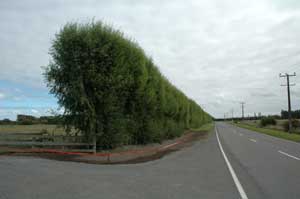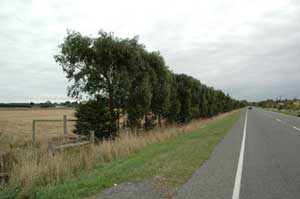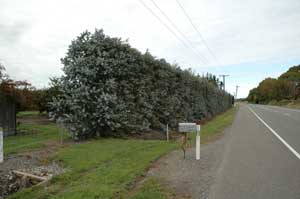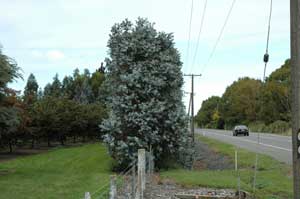 |
Centre for Australian National Biodiversity
Research
|
CPBR NEWS
Issue 68: April 2005
News from the Centre for Plant Biodiversity Research, Australian National Herbarium (CANB), for the information of CPBR and ANBG staff and volunteers.
CPBR News is produced monthly. If you wish to contribute, please email your suggestions to Val Oliver, the coordinator.
Val Oliver: ph (02) 6246 5533; fax (02) 6246 5249; email: Val.Oliver@csiro.au
********************
1. Australian National Herbarium
The Consensus Census
The List of Agreed Australian Vascular Plant Names
In the March 2005 ASBS Newsletter No. 122 an advertisement appeared for the appointment of a Senior Scientist to coordinate the preparation of a National Plant Census – Australia's Consensus Census. Tony Orchard was the successful applicant and project work began on 21 April.
Australia has had only four comprehensive national censuses of vascular flora: the Flora Australiensis of Bentham in 1863–1878, those of Mueller in 1882 and 1889, and the Census of Australian Vascular Plants coordinated by Hnatiuk in 1990.
To fill the void, many organisations and groups have written regional or State Census lists, the best known of course being those produced by the State and Territory Herbaria. These lists work well for their designed purpose, but problems arise when the information is applied to cover composite areas. Not unexpectedly, non-congruence occurs where censuses overlap. This is particularly apparent in broad scale land management projects, or in management of rare and threatened taxa on a national scale. For example, a survey of a national conservation organisation in 2003 discovered that managers were trying to reconcile 12 different census lists for vascular flora, all of which overlapped, and differed in taxonomic concepts.
The Council of Heads of Australian Herbaria (CHAH) has agreed that their member organisations will cooperate to produce a single consensus list of the names (with major synonyms) to be used on a day-to-day basis for the taxa of Australia's vascular flora. This list will be advisory and a living document, subject to continuous update as (consensus) knowledge advances. The List of Agreed Australian Vascular Plant Names will be the view presented in the Australia's Virtual Herbarium (AVH). The list will be built on the Australian Plant Name Index (APNI), and will in effect be an additional view of that database, in the same way that What's Its Name and APNI Light present customised views of the data. A time line of 2 years has been set to achieve the first iteration of the Consensus Census, with information being available progressively as data is entered into APNI.
Funding for employment of the Project Coordinator has been provided by the Natural Heritage Trust (NHT) through the Commonwealth Department of Environment & Heritage, to the Centre for Plant Biodiversity Research (CPBR). The project will be jointly managed by the CPBR and CHAH. The Project Coordinator will be located in Canberra as part of the Australian National Herbarium (ANH) with direct access to APNI and its support database group.
CHAH has committed wholeheartedly to the project, including nominating a staff member from each herbarium to form a CHAH Working Group, which will work in close collaboration with the Project Coordinator, to develop the list of agreed names. The members of this group are Terry Macfarlane (PERTH), Dale Dixon (DNA), Robyn Barker (AD), Ailsa Holland (BRI), Peter Wilson (NSW), Brendan Lepschi (CANB), Neville Walsh (MEL) and Alex Buchanan (HO). Procedures will be put in place for involvement of members of the Australian botanical community and to provide opportunities for individuals to participate. For example, it is hoped that specialists will be able to provide lists of accepted names and synonymies of their particular groups, to facilitate the project.
This Consensus Census project has been described as the fifth BIG initiative in Australian botany - the other four being Bentham's Flora Australiensis, establishment of ABRS and the Flora of Australia project, Australia's Virtual Herbarium and APNI. It is an exciting scheme and will have major influence into the future.
The next ASBS Newsletter will provide a more complete description of how the project will operate and how individuals can participate. A description of the project will also appear shortly on the CHAH website (www.chah.gov.au).
[Tony Orchard]
[Coordinator, Consensus Census project]
**********************************************************************************
Eucalypts, Hedges and New Zealanders
Six days in the countryside on my first trip to New Zealand is certainly not long enough to make any significant comment about their plants or vegetation, but sometimes first impressions can be interesting. We arrived for Easter and travelled about 2000 km north and west from Christchurch, on the south island.
One of my first impressions was the shape of the trunks of the huge number of eucalypts planted everywhere in the country (there seemed few signs of people planting native NZ trees). I was used to seeing eucalypt trees looking much healthier outside of Australia in the absence of insect pests, but these NZ specimens looked different again. Their trunks seemed to flare outwards where they joined the ground, and in older specimens this developed into what could almost be described as rounded buttresses. This growth habit appeared to be common to several eucalypt species.
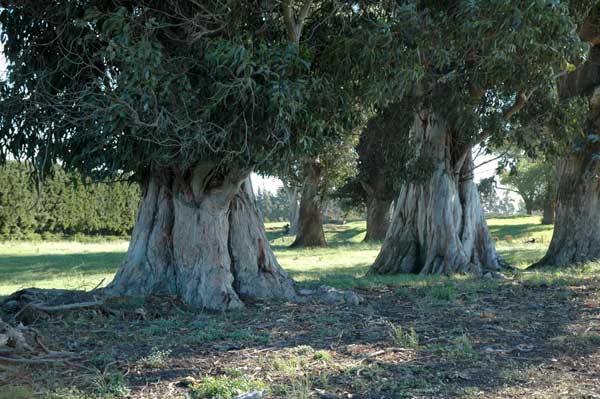
Eucalypt trunks, flaring outwards near the ground.
The topic of eucalypts leads on to my other revelation – New Zealanders and hedges. I will forever think of New Zealanders as 'arboreal control-freaks', their preoccupation with making everything into a hedge is amazing. Nowhere else would people consider that a row of poplar trees was not vertically straight enough and attempt to prune them exactly 90° to the ground, then horizontally at about the height of a two story building. Having seen rows of Pinus radiata and willow trees pruned into huge perfectly squared woody hedges, I knew our free-form eucalypts would not escape the clutches of these control-freaks somewhere. (Why would you make a hedge of a willow trees that lose their leaves anyway?).
Near Lincoln I found them, poor mutilated rows of eucalypts which some land-owner had attempted to tame, not very successfully. Not having my pocket Euclid at hand, I'm not sure which species, but definitely two, one a little more successfully than the other.
It would be interesting to do a survey of New Zealander's gardens in Australia to see if this trait gets transported across the Tasman. The genes that cause people to cut gorse into neat square garden hedges may not easily be lost, (and anyone doing research on willow trees better keep their specimens away from New Zealanders).
|
|
|
|
|
|
[Murray Fagg]
**********************************************************************************
Disaster Plan
A Disaster Recovery Plan for the Australian National Herbarium is in its final stages of completion. Angela Newey (a graduate with the Department of Environment and Heritage) has spent the past 3 months researching best practice for recovering and restoring materials of national significance such as those of the botanical collections of the herbaria on both sites (CSIRO and ANBG), the libraries on both sites, and the photographic collection at the ANBG. The plan provides a framework for a rapid and effective response to an emergency that will minimize the likelihood of damage to the collections and maximize the chances of recovering and repairing any damage that may occur.
The Plan sets out clearly defined roles for people to follow in case of an emergency, including clear instructions for all willing helpers who are able to drop what they are doing to chip in and help save these irreplaceable assets.
Importantly, the development of a Disaster Plan places the CPBR/ANH in a position to be able to apply to become a party to the Disaster ACT (DISACT) Memorandum of Understanding. This MOU sets out a framework for cooperation between a number of cultural institutions in and around Canberra, who agree to share equipment and expertise, where possible, should disaster befall any of the member organizations.
Anyone wishing to have a look at the plan can contact Angela at angela.newey@deh.gov.au, or, see Brendan or Jim.
[Angela Newey]
**********************************************************************************
Seminars
Parasitism and Environmental Variation: Do high quality environments make high quality parasites?
Background: I will address how environmental variation modifies the severity of parasite infection in the mosquito Aedes albopictus. Results from this experiment and from recently published literature inform our understanding of natural variation in both parasite virulence and parasite-mediated selection.
Michelle Tseng
Department of Biology, Indiana University
May 12th, 2005. At 12:30 pm.
Herbarium Tea Room
[Dr. Tupac Otero]
**********************************************************************************
Updated 17 May, 2005 , webmaster, CANBR (canbr-info@anbg.gov.au)
